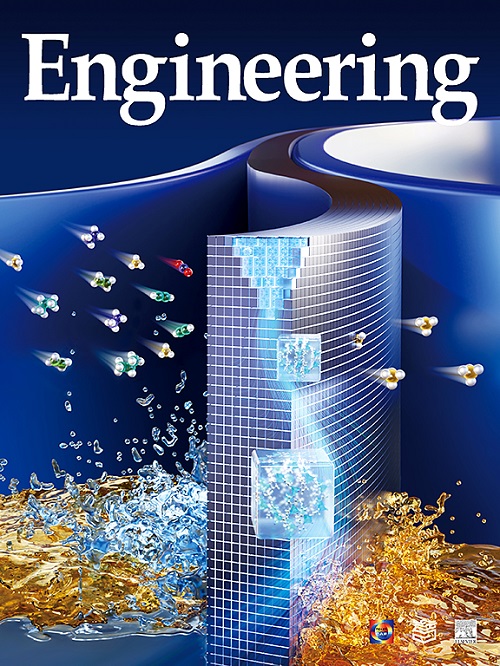Experimental Study on the Coupling Dynamics of Metal Jet, Waves, and Bubble During Underwater Explosion of a Shaped Charge
IF 11.6
1区 工程技术
Q1 ENGINEERING, MULTIDISCIPLINARY
引用次数: 0
Abstract
Unlike conventional spherical charges, a shaped charge generates not only a strong shock wave and a pulsating bubble, but also a high strain rate metal jet and a ballistic wave during the underwater explosion. They show significant characteristic differences and couple each other. This paper designs and conducts experiments with shaped charges to analyze the complicated process. The effects of liner angle and weight of shaped charge on the characteristics of metal jets, waves, and bubbles are discussed. It is found that in underwater explosions, the shaped charge generates the metal jet accompanied by the ballistic wave. Then, the shock wave propagates and superimposes with the ballistic wave, and the generated bubble pulsates periodically. It is revealed that the maximum head velocity of the metal jet versus the liner angle α and length-to-diameter ratio λ of the shaped charge follows the laws of 1/(α/180°)0.55 and λ0.16, respectively. The head shape and velocity of the metal jet determine the curvature and propagation speed of the initial ballistic wave, thus impacting the superposition time and region with the shock wave. Our findings also reveal that the metal jet carries away some explosion products, which hinders the bubble development, causing an inward depression of the bubble wall near the metal jet. Therefore, the maximum bubble radius and pulsation period are 5.2% and 3.9% smaller than the spherical charge with the same weight. In addition, the uneven axial energy distribution of the shaped charge leads to an oblique bubble jet formation.
水下聚能爆炸中金属射流、波浪和气泡耦合动力学的实验研究
与传统的球形装药不同,聚能装药在水下爆炸过程中不仅会产生强烈的激波和脉动泡,还会产生高应变率的金属射流和弹道波。它们表现出显著的特征差异,并相互耦合。本文设计并进行了聚能装药实验,对这一复杂过程进行了分析。讨论了聚能装药的内衬角和重量对金属射流、波浪和气泡特性的影响。研究发现,在水下爆炸中,聚能产生伴随弹道波的金属射流。然后,激波与弹道波传播叠加,产生的气泡周期性脉动。结果表明,金属射流的最大水头速度与聚能药衬角α和长径比λ的关系分别为1/(α/180°)0.55和λ0.16。金属射流的头部形状和速度决定了初始弹道波的曲率和传播速度,从而影响了与激波叠加的时间和区域。研究结果还表明,金属射流带走了一些爆炸产物,阻碍了气泡的发展,导致气泡壁在金属射流附近向内凹陷。因此,气泡的最大半径和脉动周期比相同重量的球形装药分别小5.2%和3.9%。此外,聚能轴向能量分布不均导致了斜向气泡射流的形成。
本文章由计算机程序翻译,如有差异,请以英文原文为准。
求助全文
约1分钟内获得全文
求助全文
来源期刊

Engineering
Environmental Science-Environmental Engineering
自引率
1.60%
发文量
335
审稿时长
35 days
期刊介绍:
Engineering, an international open-access journal initiated by the Chinese Academy of Engineering (CAE) in 2015, serves as a distinguished platform for disseminating cutting-edge advancements in engineering R&D, sharing major research outputs, and highlighting key achievements worldwide. The journal's objectives encompass reporting progress in engineering science, fostering discussions on hot topics, addressing areas of interest, challenges, and prospects in engineering development, while considering human and environmental well-being and ethics in engineering. It aims to inspire breakthroughs and innovations with profound economic and social significance, propelling them to advanced international standards and transforming them into a new productive force. Ultimately, this endeavor seeks to bring about positive changes globally, benefit humanity, and shape a new future.
 求助内容:
求助内容: 应助结果提醒方式:
应助结果提醒方式:


